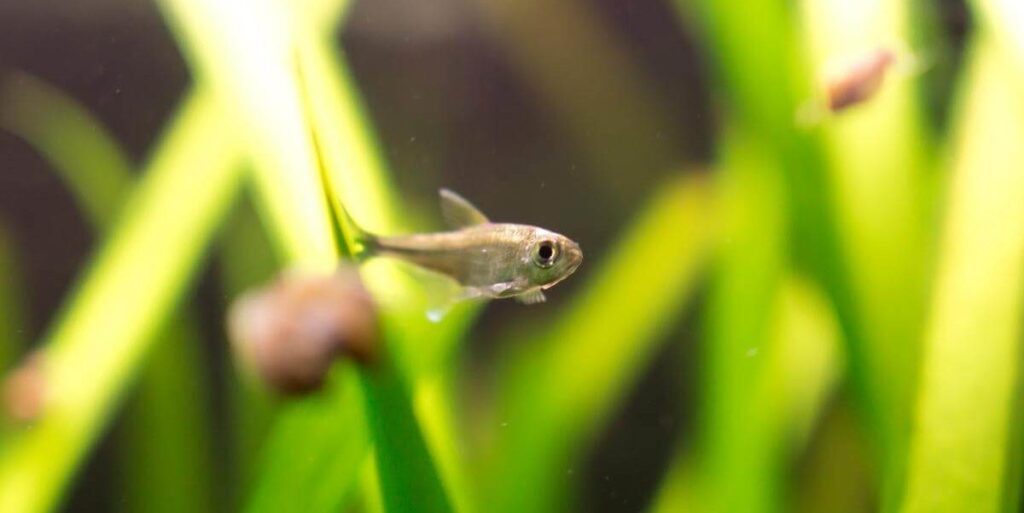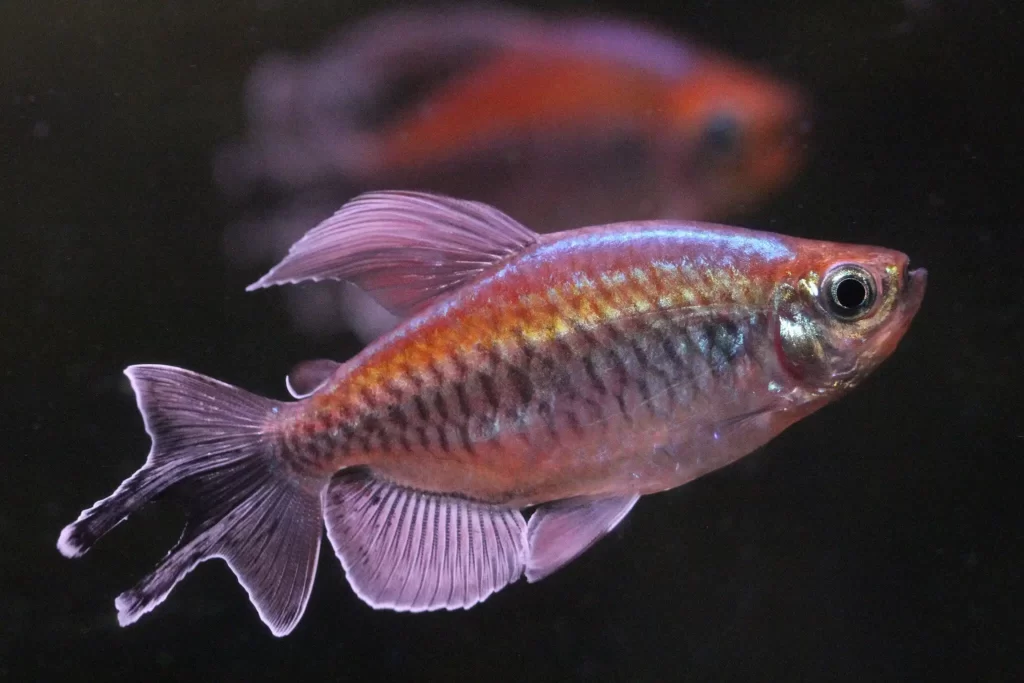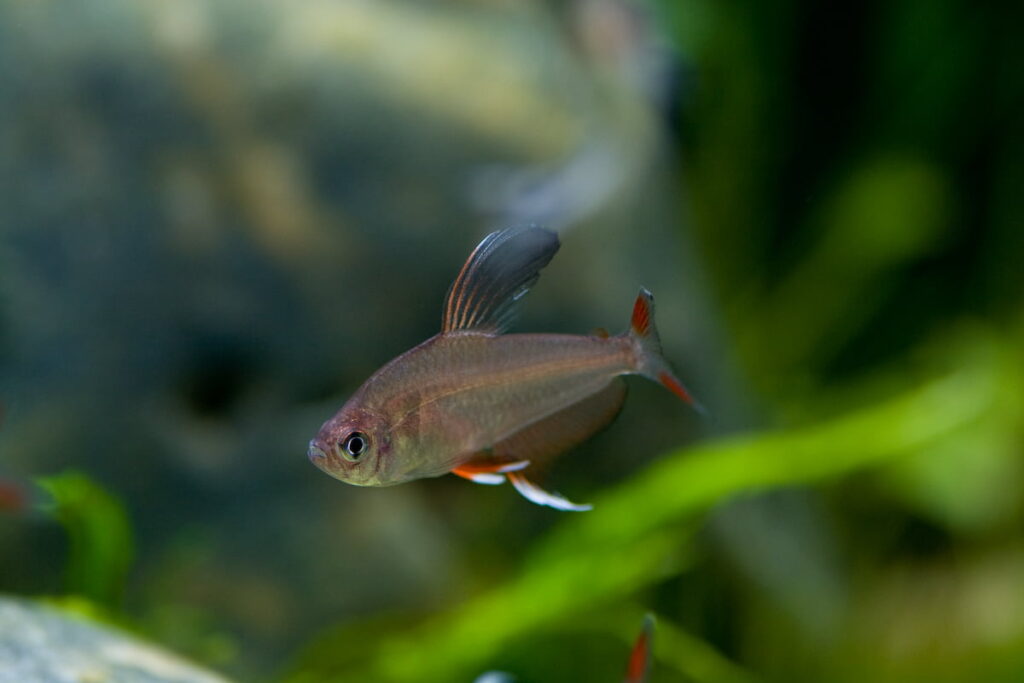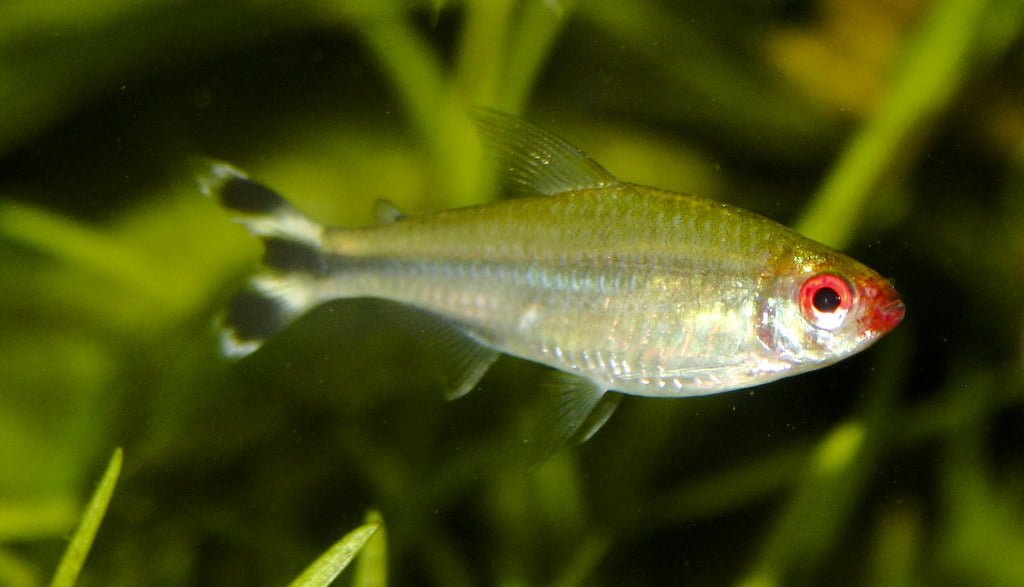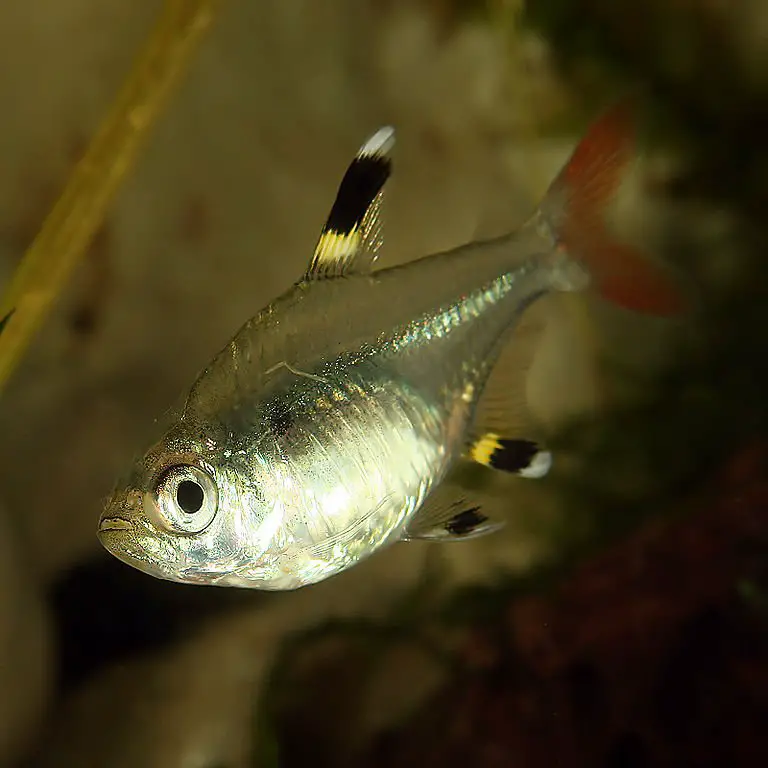Out of hundreds of tetras, Gold Tetra happens to be one of my favorite fish. Gold Tetra (Hemigrammus rodwayi) belongs to the family Characidae and is found in the floodplains of the South American regions. Its oddly satisfying color and size make it one of the most demanded fish throughout the hobby, not only for its appearance but for its behavior. Its scale secretes a special type of enzyme known as Guanin that protects it from parasitic infections and, at the same time, gives it the distinct golden color to its body, hence called Gold Tetra.
And in this article, I will be sharing with you my knowledge about the Gold Tetra. We will be going through everything that you need to know before you bring home your first school of Gold Tetras.
Introduction of Gold Tetra
Gold Tetras (Hemigrammus rodwayi) are brightly colored small fish that like to swim in a school of at least six of their own kind. As the name suggests, it is famous for its distinct gold color. They are usually shy when kept in fewer numbers and are not able to present their full colors. So it is best to keep it with a school of Gold Tetras and plenty of other small fish, which gives them a sense of security. This fish tends to have an extraordinary ability in the hearing; thus, Gold Tetras quickly detects any disturbances in the water.
Origin
Gold Tetras belong to the South American species of fish and originate from the coastal floodplains of the South American waters. It was first discovered and introduced to the hobby back in 1909 by Marion Durbin Ellis.
They are native to Guyana, Suriname, French Guiana, Peru and Brazil and live in slow-moving rivers, tributaries, and floodplain lakes.
Gold Tetra Appearance
Gold Tetras have a strikingly beautiful appearance. A silverfish body with what looks like a sprinkle of gold dust. It is an absolute candy for an eye. The color is not only for the visual appeal but is also functional. It is a coat of Guanin that protects the fish from parasitic infection. It has a sprinkle of gold throughout its body and has back color towards its tail.
Availability
Gold Tetra is not as common as other types of tetras like neon tetras, cardinal tetras, blue tetras, etc. However, a prominent local fish store that has a variety of fish may have it now and then, and you also have the option of buying it online through the internet.
Price
Gold Tetras are not as common as other tetra fish. As a result of its rarity, it is priced fairly above the average price range. A single Gold Tetra can cost you up to 5$. I recommend you to keep in a group of 6 at least and optimally a school of 8-10. A school of fairly sized Gold Tetra is going to cost you 40$ and up. However, the price may vary from store to store, depending on the availability and the amount of fish. Generally, you will get a better deal if you buy a larger school of Gold Tetra.
Life Span
The lifespan of Gold Tetra in the wild is about 5 years, as they have the perfect environment in the wild they thrive on their natural habitat. As much as we try, but we cannot completely replicate their wild habitat; thus, there is a slight decrease in the life span of the fish. In captivity, Gold Tetras can live for up to 3-4 years in the aquarium provided with good care.
Sexual Difference
Male Gold Tetras can be differentiated from the female Gold Tetras by some subtle things. Male Gold Tetras are shinier than the female, and also the size of the fish is usually smaller than the female. Female Gold Tetras have a wider stomach and duller color.
Social Behavior and Tank Mate
Gold Tetras are peaceful fish and are shy at times. It usually never gets aggressive towards other fish and rarely engages in any aggression. Small fish like serpae tetra, ember tetras, black neon tetra, and neon tetras are some of the best choices for tank mates. And we should avoid keeping Gold Tetras with aggressive fish like cichlids, angelfish, etc.
Fishkeeping Difficulty
Gold Tetras require special care and aren’t the easiest fish to keep. I wouldn’t suggest this fish for a beginner fish keeper. These fish are more prone to skin disease and has relatively lower immunity. A slight change in water parameters might lead to stress in the fish and, at the worst, might also lead to fatality. So these fish should only be kept by expert fish keepers who can maintain constant parameters.
Caring for Gold Tetra
Special care should be provided for a fish this beautiful. These fish are delicate and have a very low tolerance for bad water parameters. They tend to get sick quite often. So a constant water parameter that is required for the fish should always be provided to the fish.
Size of the Tank
You should always consider the size of the fish in the first place. The general rule of thumb is to set a minimum of 15-gallons of the tank for the fish. And with the addition of each fish 1-gallon water volume should be increased. The best bet for you is to get a larger tank. A 30-gallon tank would be perfect for a school of 15 Gold Tetras. And with the additional amount of fish, the size of the tank should also be increased.
Read the full article on how to set up an aquarium for tetra fish. This will definitely help you out to set up your first aquarium like a pro.
Lightings
Gold Tetras thrive the best in a planted tank, and for a planted tank, we require plenty of bright light for a long duration. However, harsh lighting can cause the fish to go under stress. So a heavily planted tank with a lot of shady and hiding places is required for the fish.
Substrate and Decorations
The substrate and the decorations should be taken care of before you get your fish home. You will have to make sure that the substrate doesn’t have any pointy surfaces and are smooth so it won’t harm the fish scales. Substrate like aquarium soil and sand will best serve the fish. Talking about the decorations, I prefer to make it as much as natural as possible. Adding live plants that provide a lot of hiding spaces should be your best bet. You can also add natural or synthetic driftwood and aquarium rocks according to your choice.
Gold Tetra Fish Diet
Similar to other tetra fish, the Gold Tetras are also omnivorous and will accept all sorts of food from both plant and animal origin. In the wild, they tend to feed on dead plants and small crustaceans and fish, but in captivity, it is best to offer them a different variety of high-quality pellets and flakes. You also can feed them live foods like brine shrimp, daphnia, frozen bloodworms, etc. now and then. However, feeding it with too much food may lead to complications. Overfeeding the fish may lead to bloat and, at the same time, also pollutes the water. So only a little amount of food should be added in the tank that the fish can consume within 3 minutes. It’s essential to remove the uneaten fish food after your fish finished eating as rotten foods cause ammonia levels to spike in your tank.
Here is a detailed article on the tetra fish diet that can help you feed your Gold Tetra Fish.
Maintain Water Quality
Maintaining the quality of water is very important. It is like cleaning your environment where you live. You wouldn’t want to live in a dirty house, would you? And similarly, your fish won’t like living in a dirty tank without any maintenance. This would lead to decreased immunity and sick fish. There are some mandatory steps that you should follow to ensure your fish lives a full and healthy life. They are water changes, pH checks, cleaning the glass, and vacuuming the substrate every once in a while.
Water Temperature
Gold Tetras usually prefer water on the warmer side, so setting the water temperature to about 78°f to 80°F would be the best. In this temperature, the fish can show its color to its full potential. Get a heater that is automatic so that all you have to do is set the desired temperature and let it rest on your tank. Also, get a thermometer to monitor your aquarium temperature. This way you can adjust the temperature of your heater.
Water pH and Hardness
Water on the tank of Gold Tetra should be soft so maintain your water hardness to 1 – 12°dGH, As the water present in their natural habitat has a pH of about 6.0, so always try to maintain your Tank water pH range close to 6.0.
Aquarium Filter
Water filtration is the most important factor for the wellbeing of the fish. As Gold Tetras are relatively smaller fish. Filters having high current flow will stress the fish out in the long term. A good sponge filter that provides good biological filtration should be set up in the tank. A good hang on the back filter containing adjustable water flow can also be used, by setting the water flow level to low. You can also use canister filters and other types of aquarium filters adjusting the water flow.
Water Maintenance
The water in the tank should be maintained in every fish tank and maybe more in the case of Gold Tetras. They are like a delicate piece of jewelry and require your care and praise. Maintaining a pristine water condition in the tank is a must. Checking the pH and hardness of the water every other week and making sure it is at the ideal level is advised for the proper wellbeing of the fish.
Always change at least 10 % of your aquarium water so that any impurity in your tank is removed.
Fish Disease
Gold Tetras are not the easiest fish to care for; they are very prone to diseases and might get sick even as a result of a slight change in their environment. Their scales secrete guanine, which protects the fish from parasitic infestations, and these fish are very prone to parasitic infestation, so a slight decrease in the guanine coat in their skin will lead the fish to various disease and especially skin parasites.
Breeding Gold Tetra Tish
Breeding the Gold Tetra is not easy and rarely occurs in captivity. However, if you set up a separate tank for the breeding process, your chances might drastically increase. You can do so by setting up a 10-gallon breeding tank. Adding a lot of plants with wide leaves can be useful as the fish tends to lay their egg in flat smooth surfaces. The breeding ritual usually takes place in the night time or a shady place, so if you set your tank in a darker area, the chances of your fish laying eggs get increased.
The water in the breeding time should have a perfect parameter. The pH in the tank should be 6.0pH, and the temperature should be around 80°F. Preparing your fish before breeding them will also increase the outcome. Feeding the fish with live foods will make them more likely to breed. In the above setup tank, you should add a dozen Gold Tetras and preferably 6 males and 6 females. The females lay their eggs on a smooth surface while the male fish chase the female and then fertilize the egg. You should remove the parent fish after they lay the eggs as they process a threat to the future fish fry. Under favorable conditions, the fish fry should hatch out of the eggs in around 24 hours.
Care for the Fry
It usually takes about 24 hours to hatch from its egg. It won’t look like its parents and may or may not get the golden color in the captivity. They hatch out of the egg with a yolk sac and keep on feeding on the yolk sac until the 3rd day and get its nutrition from the yolk sac. You can feed your fish fry after they can swim freely. Feeding your fish fry with live foods like baby brine shrimp will make your fish fry grow faster.
Summary
Before you go out and head towards your local store to buy your fish. Having at least this much of knowledge will give you an upper hand over other fellow hobbyists. You will know what you are getting and will be prepared for the nest and worst-case scenario.
Reference
Image Credit: Diana MacPherson – https://www.flickr.com/photos/dianamac/8753926773/
